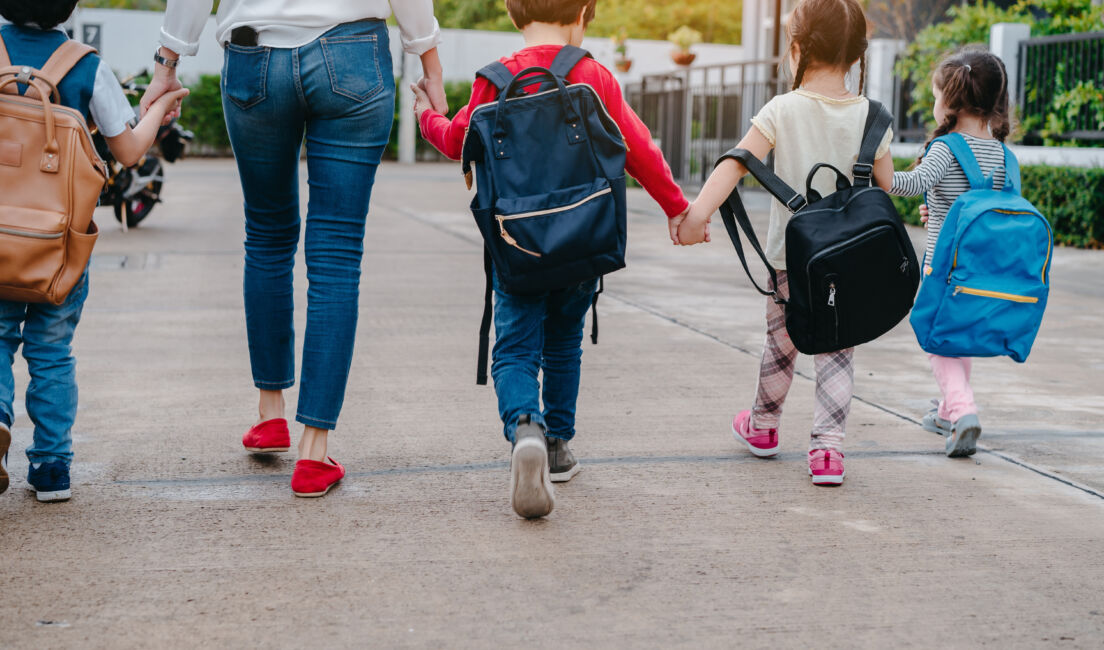Back to school, building trust, and 5 links worth your time
One size does not fit all

I have two teenagers who both want to go back to school in a few weeks—in a building with their friends, not on Zoom. I also have a household member who has a medical condition that puts him at higher risk for complications from COVID-19.
I’m worried about the fall, both for my children’s education and well-being and for my family member’s health. My situation is hardly unique, though, and the question of whether to reopen schools for in-person instruction is probably on your mind, too. Whether you have school-aged children or not, education policy, economic recovery, and health concerns affect us all because they are connected.
One size does not fit all
There are more than 13,500 school districts in the United States. Dr. Mike McShane, director of national research at EdChoice and Forbes columnist, pointed this out during a recent recording of the Civil Squared Podcast. With so many districts across the country, no one solution will fit them all.
In the spring, each of these districts had to deal with the realities of the pandemic. Governors in almost every state mandated the end of in-person instruction, but decisions about how to make the transition from in-person instruction to distance learning were often made at the district level.
Mike recounted examples of the way schools dealt with the transition, and he observed something interesting: districts that were right next to each other and were similar in terms of demographics and resources often had results that were radically different from each other. In some examples he described, one district had a smooth transition to online-learning but a neighboring district really struggled.
If the districts were similar in most respects, what accounts for different outcomes?
Working together = success
Schools that weathered the transition best, Mike says, are those that had two important things working in their favor. First, these schools were moving to or had already adopted technology-based learning tools, so students had access to computers or tablets and software used in the classroom and at home.
Second, these districts had communities with “great communication” who were used to “working together” and “making sacrifices” for one another. In short, when faced with so much that was unknown, families, teachers, and administrators demonstrated high levels of trust in their interactions with one another.
“Turn down the dial”
The pandemic has, in education policy as in so much else these past months, highlighted weaknesses and fragility in our institutions and our relationships. Questions about opening schools in the fall have the potential to further polarize us, and Mike encourages us to all to “turn down the dial” on our debates and instead exert that energy on “making our communities pleasant places to live.”
We are, he reminds us, “a big, vast diverse country” and the challenges we face are specific to our communities. What if, instead of arguing, we focus on working together to build systems, in education and beyond, that are more resilient? If our communities develop trust through thoughtful exchanges between parents, teachers, and administrators, Mike believes we’re more likely to succeed in building that resiliency to face the uncertainty ahead.
You can listen to our conversation on the Civil Squared Podcast. Our five links this week include Mike’s recent Forbes’ column and four articles with different perspectives on the school reopening debate. I hope you’ll use them to start some trust-building conversations in your community!
5 links worth your time
- Do Not Tie School Funding to Reopening Full-Time, Forbes – Our Civil Squared Podcast guest, Dr. Mike McShane, argues that making federal funding contingent on full-time reopening ignores the lessons of the pandemic thus far. Instead of a “one-size-fits-all mandate from Washington,” education dollars should “follow children into the schooling environments that are educating them.”
- A Better Fall is Possible, The Atlantic – Dr. Sarah Cohodes, a professor of economics and education at Teachers College, Columbia University, highlights the importance of in-person education and serving students’ needs. There is no “return to normal” this fall and, among the tough choices we’ll have to make this fall, “the hardest, perhaps, is this: We will not be able to reopen for all children.”
- ‘I Don’t Want to Go Back’: Many Teachers Are Fearful and Angry Over Pressure to Return, New York Times – Some policy experts and parents may want reopening in the fall, but schools also rely on teachers’ presence and many teachers are afraid to return to the classroom. How will school districts handle teachers in high-risk categories? Will teachers have choices about whether or not to return?
- The risks of keeping schools closed far outweigh the benefits, The Economist – Since education is “the surest path out of poverty,” we must consider the higher cost of school closures to those in impoverished areas, nationally and internationally. Though the cost to reopen schools will be high, the cost of keeping schools closed will be much higher for many students around the world.
- Private ‘school pods’ are coming. They’ll worsen inequality., The Washington Post – Emily Oster, a professor of economics at Brown University, looks at the emergence of “home-schooling pods” as a response to the COVID-19 pandemic. While she worries that “impromptu private schools led by parents or privately hired teachers” will only be available to the wealthiest, she encourages everyone to “make productive use of this social movement” to find creative solutions to educational challenges.
Photo by Kiattisak on Adobe Stock